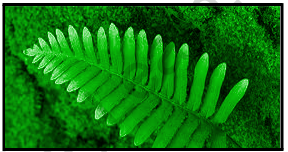Table of Contents
Introduction:
Before the flowering plants, the area was teeming with plants that looked like ferns for hundreds of millions of years. Pteridophytes reflect many of the characteristics of their ancestors. Unlike many other members of the Plant Empire, pteridophytes do not reproduce by seed, producing seeds instead. Pteridophyta.
Pteridophyta is one of the oldest plant groups in the plant kingdom. They have appeared much earlier than angiosperms. They are one of the first “true” plants to adapt to life on earth. The main features of Pteridophyte are as follows: Seedless, vascular plants that reflect true genealogy. In addition, the sporophyte has real roots, stems, and leaves. They may be homosporous or heterosporous.

Pteridophyta Classification
Pteridophyta is divided into four main categories:
Psilopsida
- They are very original.
- The stem is photosynthetic and dichotomously branched.
- Rhizoids exist.
- The leaves are not very thick.
- The sporophyte is a homosporous synangium.
Examples – Psilotum and Tmesipteris.
Lycopsida
- They are best known as club moss.
- A distinct plant body with roots, stems, rhinophores and leaves.
- The sporophyte is homosporous or heterosporous.
Examples – Selaginella, Lycopodium.
Sphenopsida
- Commonly known as horsetail.
- A distinct plant body with roots from the underground rhizome, stem, and scaly leaves.
Examples- Equisetum.
Pteropsida
- Commonly known as a fern.
- A distinct plant body with roots, stems, and leaves.
- The sporophyte is homosporous or heterosporous.
- Antherozoids are multiflagellate.
Examples – Pteris, Dryopteris, Adiantum
Symptoms of Pteridophyta
- Pteridophytes are considered to be the first plants to emerge from the earth:
During the millions of years of evolution, life gradually adapted to the arid landscape, thought to have originated at sea. And among the first truly native plants on earth were Pteridophytes.
- They are cryptogams, seedless, and have blood vessels:
Pteridophytes are seedless, and they produce seeds. They contain vascular tissue but no xylem vessels and phloem-friendly cells.
- The body of the plant has real roots, stem, and leaves:
They have a plant body that is different from the root, stem, and leaves.
- Letters grow in sporangia:
The sporangium produces characters, usually one type (homosporous) but sometimes two types (heterosporous).
Learn more: Sporulation
- Sporangia are produced in groups in sporophyll:
Sporophylls, the leaves that carry sporangia, protect the growing parts from danger by usually folding in the tips of the leaves.
- The genitals are made up of many cells:
Antheridia are the male genitals, and archegonia are the female genitals.
- Demonstrates true genealogy:
Sporophyte generation and gametophyte generation are observed in Pteridophytes. The diploid sporophyte is the main plant body.
Pteridophyta Life Cycle
Pteridophytes show a change in generations. Their life cycle is similar to that of seed-bearing plants, however, pteridophyte differs from mosses and seed plants in that both generations of haploid gametophyte and diploid sporophyte are independent and free-living. The sex of the pteridophytic gametophyte can be classified as follows:
- Dioecious: each gametophyte is a male producing antheridia and sperm or a female producing archegonia and egg cells.
- Monoecious: every single gametophyte can produce both antheridia and archegonia and can function as both male and female.
- Protandrous: antheridia ripen before archegonia.
- Protogynous: archegonia matures before antheridia.
Pteridophyta Examples
Following are the important examples of Pteridophyta:
- Whisk Fern
- Dicksonia
- Selaginella
- Lycopodium
- Equisetum
- Pteris
- Dryopteris
- Adiantum
- Man fern
- Silver fern
Also read: Important Topic OF Biology: Gymnosperms
FAQs
Q. What are pteridophytes?
Ans: Pteridophytes are vascular plants that reproduce using spores.
Q. What are the three different types of pteridophytes?
Ans: Three different types of pteridophyte include:
- Ferns
- Horsetails
- Lycopods or Lycophytes





